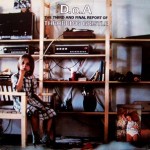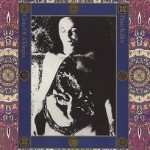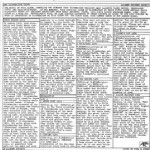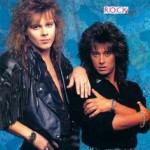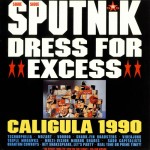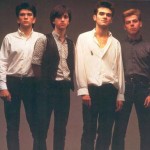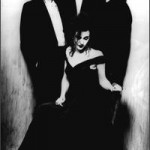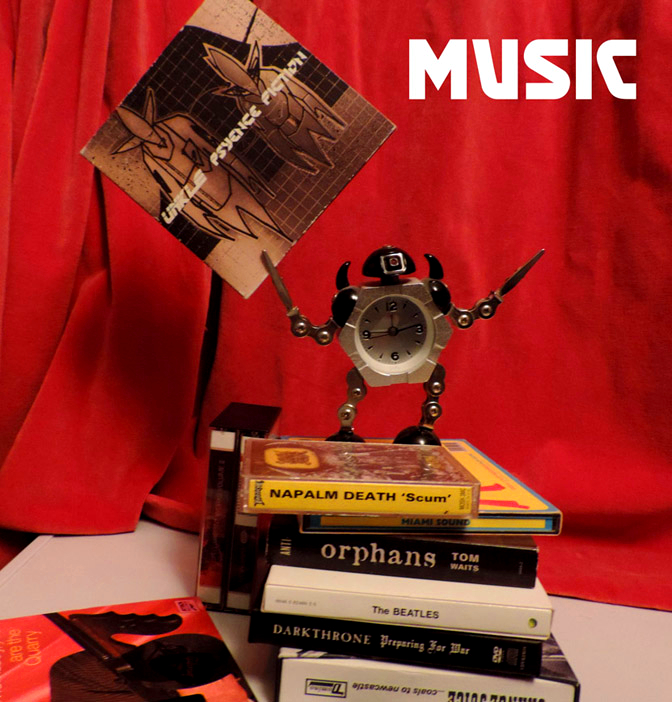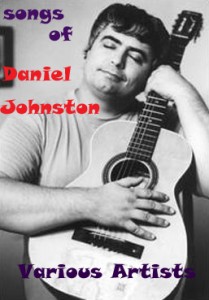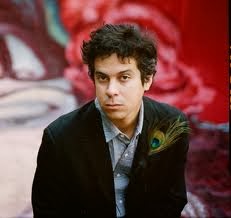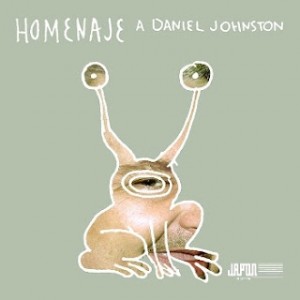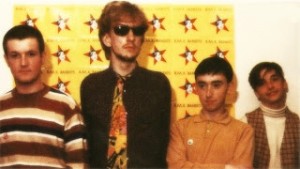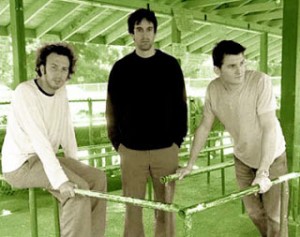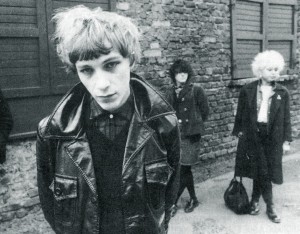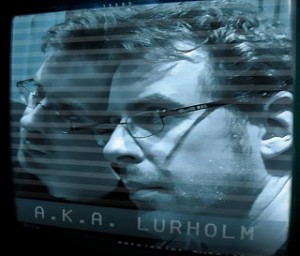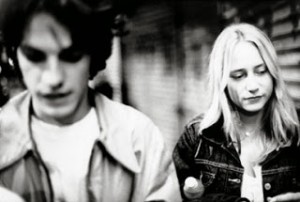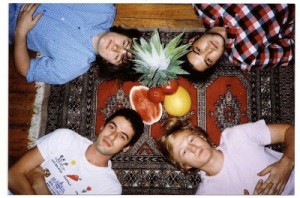So, I’m taking far too long faffing with the more (relatively) substantial things I’ve been working on, so in the meantime I will try to reinstate the weekly updates. Just to stop the whole thing becoming too repetitive, this one is in a very slightly different format from the usual playlist etc (though not massively different to be honest). So anyway; here are some things…
If You Want To Feel… slightly heartbroken, in a teenage kind of way…
Listen to – American Anymen + Lise – Oui EP
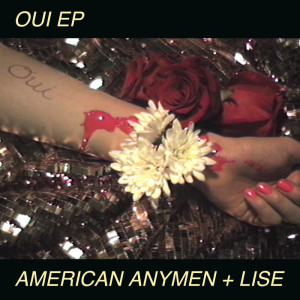
I love this beautiful little release. It’s a lovely collection of wistful, charming songs that reminded me in various ways of Daniel Johnston, Bright Eyes, Jad Fair, BMX Bandits and other groups whose work is similarly uncluttered and direct. People label this kind of thing twee, but if it is then I guess my feelings are twee, too. Oh – and this is available for FREE!
If You Want To Feel… like you belong to the Multiverse…
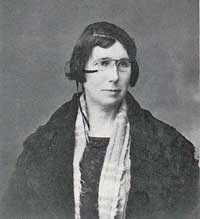
Find out what was going on in your local area, in a period that interests you. It’s easy and fun, unless of course you find it difficult & boring. Previously I have read about The Beatles in Kirkcaldy (a surreal thought) but I was recently reading about about the local activities of the suffragette movement and discovered several things that I felt I should have known for years. Not only was a local railway station which I have been to many times rebuilt in 1913 after being burned down in (allegedly) a suffragette attack, but, more definitely, the prominent suffragette, Ethel Moorhead, has very local (to me) connections. She left her childhood home in Dundee to study as a painter in the studios of Whistler & Alphonse Mucha – which is interesting enough – but a few years later, after joining the WSPU, she was arrested many times, being subjected to the usual sadistic treatment under the ‘Cat & Mouse Act’. After one of her lesser offences, she was locked up in a jail (nowadays just offices) that I walk past almost every day. She then proceeded to wreck the bathroom and flood the building. This happened in the town where I went to High School, but the (mostly very good) history teachers I had either didn’t know about it, or didn’t think it worth telling the pupils about. And yet, knowing this kind of thing makes history far more vivid and alive (and paradoxically ghostly) than the kind of standard issue textbook things that are (or were; not been to school for years) usually taught. Incidentally, I think the school really should have explained the horrors of the Cat & Mouse act. Saying women on hunger strike were ‘force-fed’ is not untrue, but doesn’t really capture just what the authorities were doing; especially here in Scotland.
If You Want To Feel… like the 80s cyberpunk future is still the future
Listen to – Anvil Strykez – Anvil Strykez

I have written a review of this great album for Echoes and Dust so won’t say much here. But if you were living in an early William Gibson novel, or the kind of 80s cartoon that is at least 50% chase or fight sequences, this would be the soundtrack
If You Want To Feel…like simple concern for your fellow human beings is less important than political ideology
Look at every major political party in the UK right now. If however, you don’t want to feel that way, look at the many people and institutions fighting for the rights of people of all kinds and trying to improve the lives of people and make your own opinion known. There are probably more people fighting and campaigning for human rights and equality than at any time in the history of the western world; this is a good thing. One of the saddest things about UK politics in 2017 is that there are many such people even within the main parties; but on the whole, their voices are being made subordinate to the political aims of those parties.
If You Want To Feel… like the internet is like all the encyclopaedias in the world, only better
Sign up for some of the many great newsletters put out for free on the web. Your interests may not be the same as mine, but I have never yet had a single newsletter from any of these without finding something of interest:
Messy Nessy – this site covers so many areas; culture, pop culture, history, art, architecture, society – and its regular newsletter is great
The New Yorker – you already know what The New Yorker is – brilliant journalism, politics, art, culture, cinema, fiction, you name it; they recently had an unpublished F. Scott Fitzgerald story for christ’s sake! For free!
FEMigré – Vonny Moyes’ blog is fairly new, but has already built up an extremely thoughtful & considered series of articles, looking at society & the world from a feminist viewpoint, which challenges not only the cultural status quo, but dogma of all kinds.
Gail Carriger’s Monthly Chirrup – mainly for fans of Miss Carriger’s books perhaps, but in addition to news relating to her steampunk fiction, the Chirrup often takes in Victoriana of all kinds, fashion and humour and is highly entertaining in its own right.
Zero Tolerance Magazine – okay, I write for ZT, but the newsletter includes lots of extreme metal-related news/offers etc as well as keeping readers up to date with the ZT blog
Museums & Galleries – most really good museums & galleries have worthwhile newsletters, the Tate & V&A etc are good but one of my favourites is The National Museum of Women in the Arts which has links to their excellent blog as well as the usual updates etc
If You Want To Feel… like you’ve run a marathon while being hit over the head with a hammer – but in a good way
Listen to Never – Demo 2017
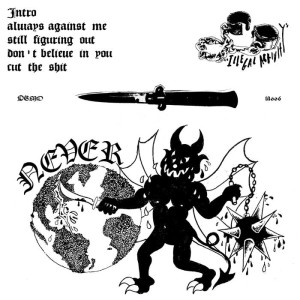
Never are a punk band from Brighton and play intense, cathartic & exhilarating hardcore/noise-ish music with lots of heart. It makes you feel better by making you feel worse
If You Want To Feel… like the music scene in 2017 is as vibrant and essential as it always is, here’s a current playlist – why break with tradition entirely?
Ghost World – Ghost World (Svart Records)
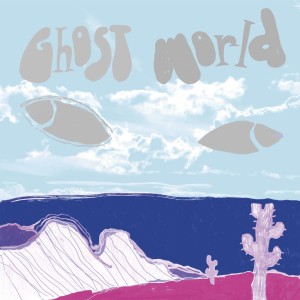
archetypically teenage neo-grunge, Finland’s Ghost World have made a fine debut album which, incidentally, includes my favourite ‘ooh’s of the year so far (on the track ‘Drain’, if you’re interested)
The Moon & The Nightspirit – Metanoia (Prophecy Productions)
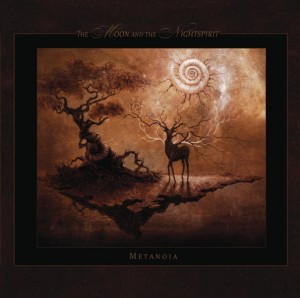
Hungarian pagan folk music which is probably as influenced by fantasy as by actual folk traditions; but it’s a lovely, slightly spooky and thankfully not very cheesy album nonetheless.
Ummagma – Winter Tale/Frequency
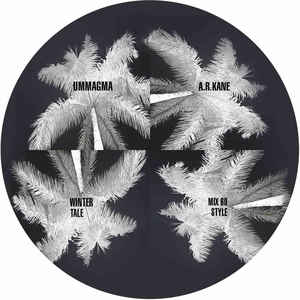
Ummagma’s almost unclassifiable* mix of dreampop, shoegaze, ambient electronica, synthpop etc etc (*see?) is at its best on the Frequency EP, a collection of extremely fresh and delicate but never throwaway tunes made with the collaboration of luminaries such as Robin Guthrie of the Cocteau Twins & OMD’s Malcolm Holmes. Winter Tale is jointly credited to Ummagma and equally-unclassifiable (or maybe not) dreampop pioneers A.R. Kane; and it sounds like both groups, which should please anyone who likes to float on a dreamy cushion of beautiful, harmonious noise.
wildcard: Coldfells – Coldfells (Bindrune Recordings/Eihwaz Recordings)
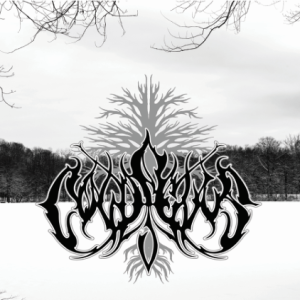
I’m not actually sure how much I like this yet; rough, harsh, Thorns-like black metal/doom with strangely melodic choruses. Hmm. A few listens in and the riffs and rough bits are great – the choruses take some getting used to, in this context though. But interesting and I’m sticking with it, so definitely not a thumbs-down.
Current Reading: I’ve been on an Orwell bender of late; currently reading his diaries, which are alternately great and dull, as one might expect of something that is in part a record of how many eggs his hens are laying etc.
Also –
- The Vorticists (ed. Mark Antliffe & VIvien Greene)
- Gail Carriger – The Finishing School (series)
- Samuel Beckett (shorter prose works)
- Steffen Kverneland – Munch
- The New European (newspaper)
Current Viewing:
- The Last Kingdom (series 2, BBC)
- Logan (pretty good, if ridiculously violent & bleak)
- Shadow of a Doubt (1943) Hitchcock masterpiece with Joseph Cotten at his charmingly sinister best
So anyway, enough for now? Until next time!

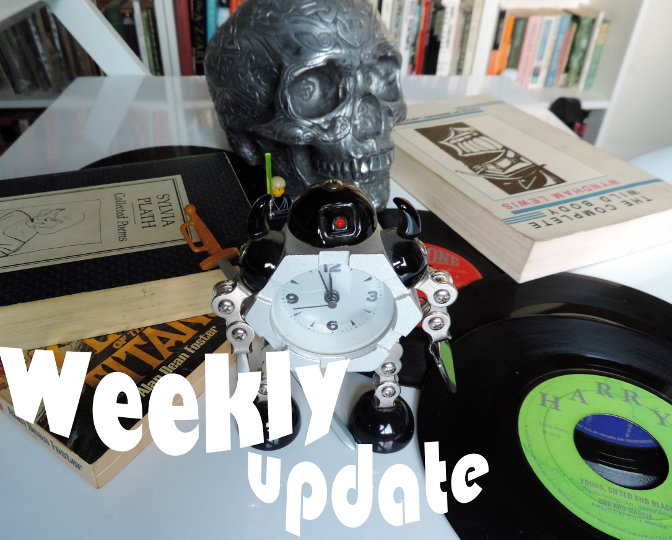

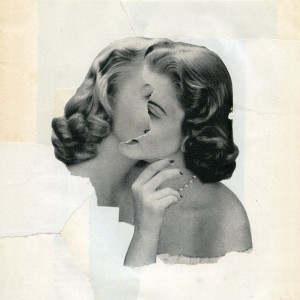
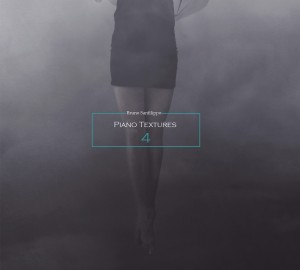

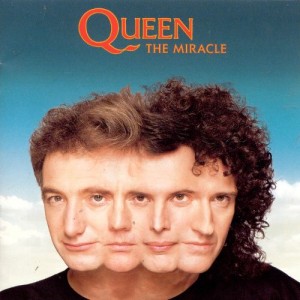

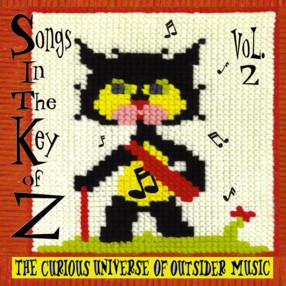
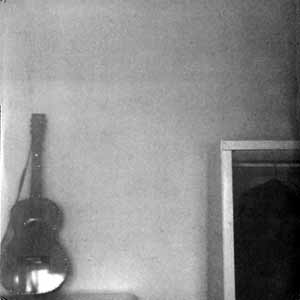
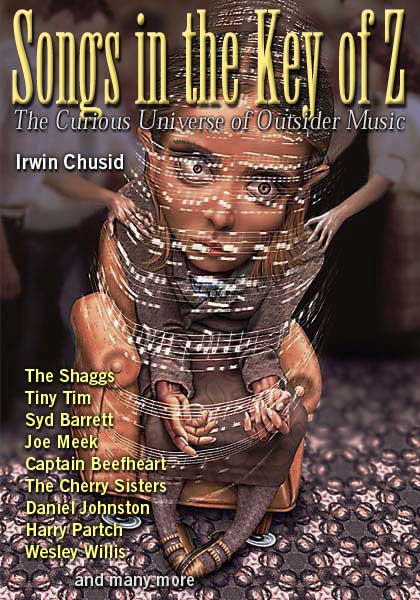 of literature on outsider music, but for a highly readable and well-researched overview, Irwin Chusid’s
of literature on outsider music, but for a highly readable and well-researched overview, Irwin Chusid’s 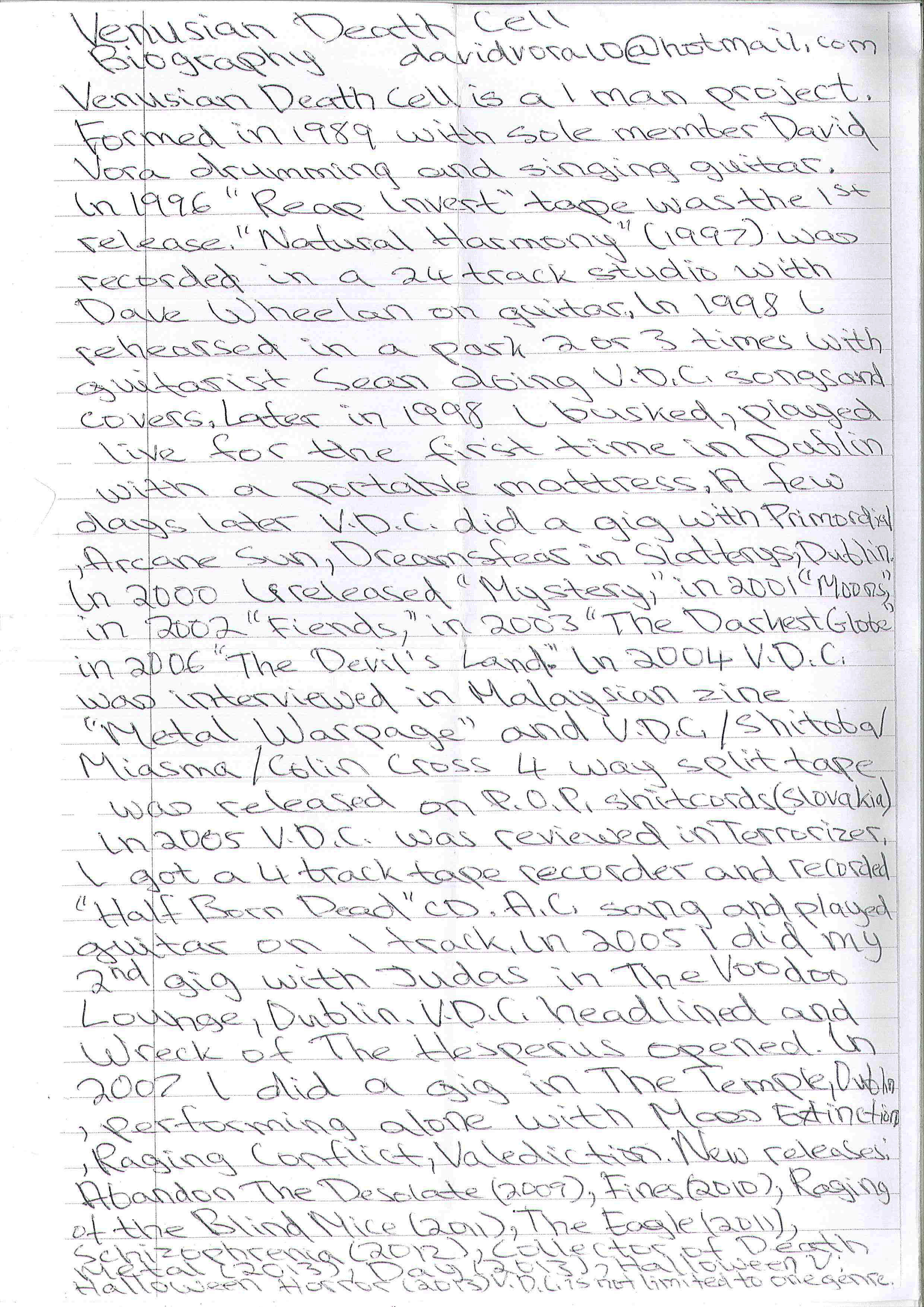
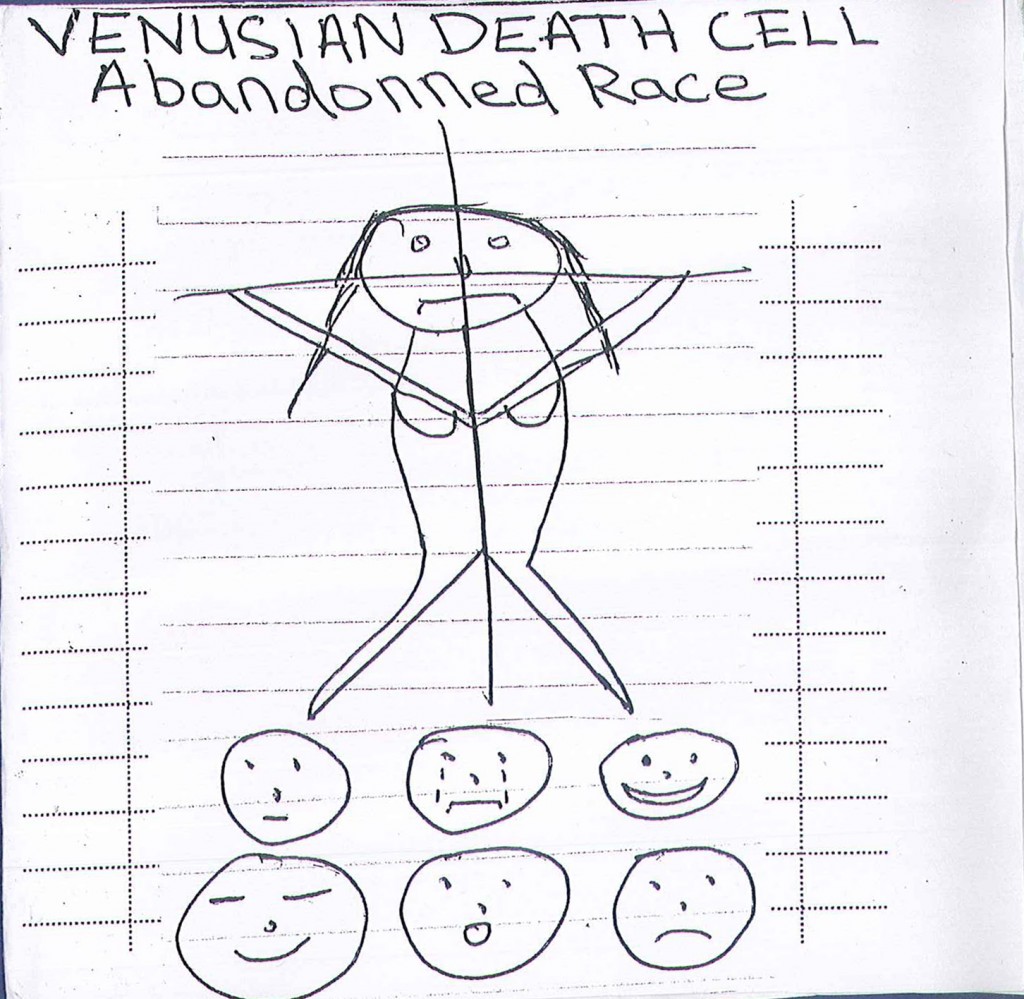
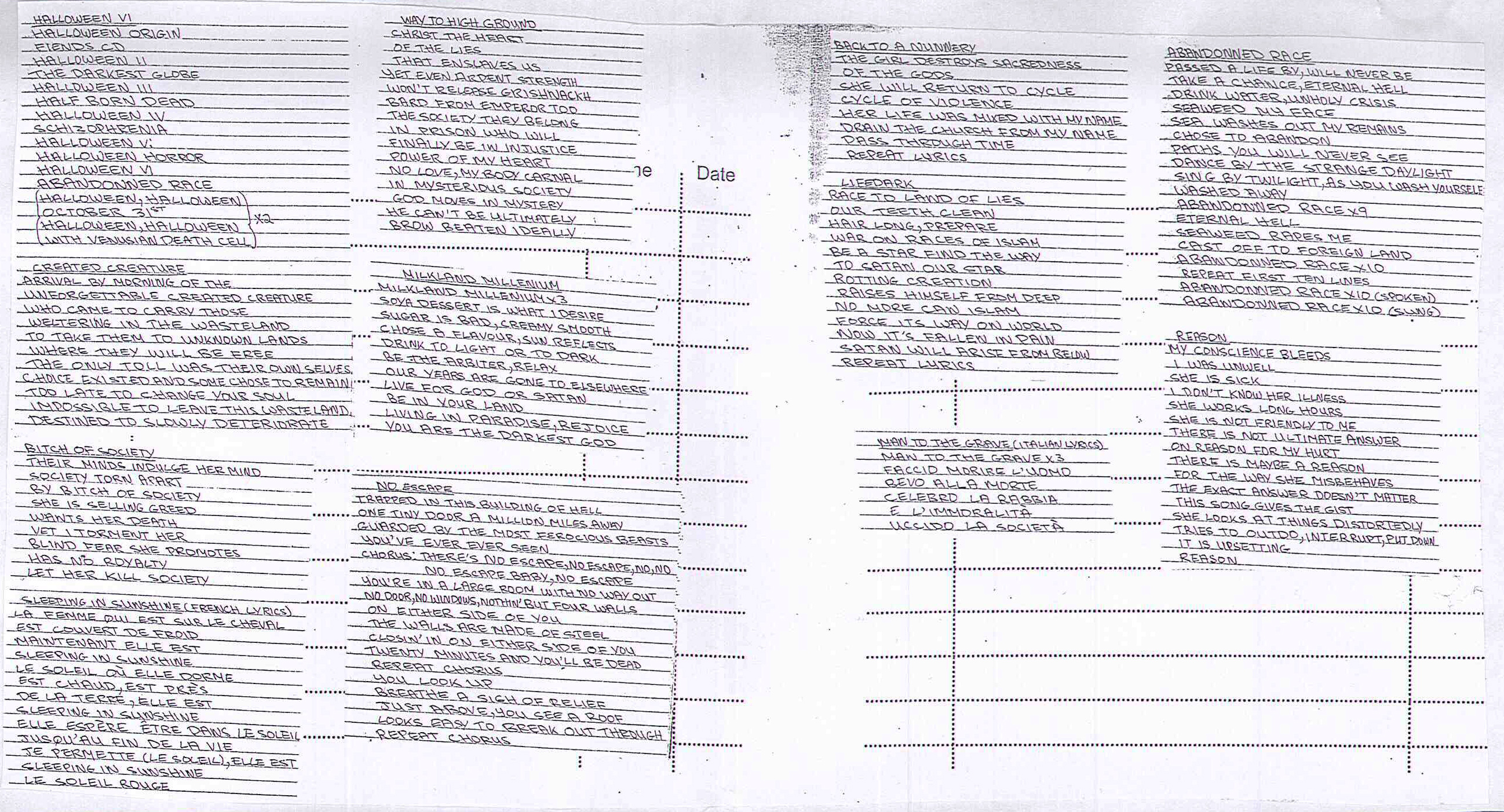
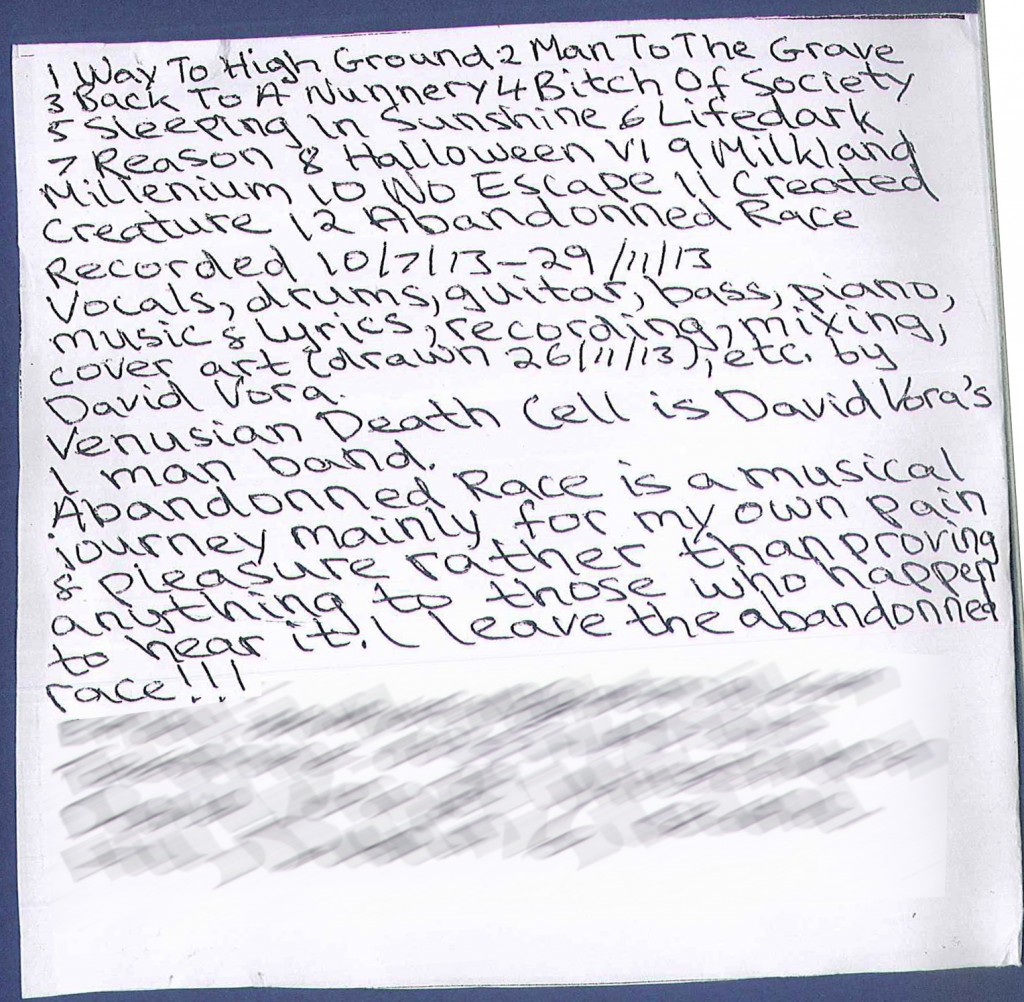


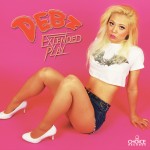
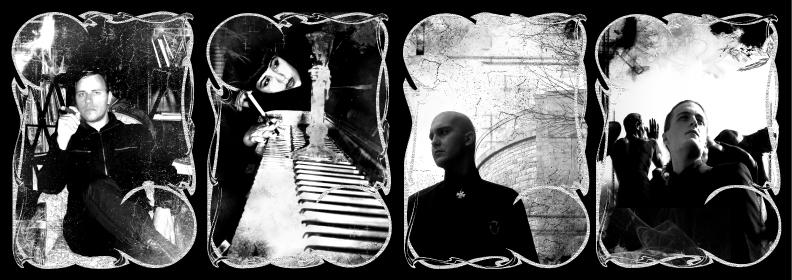
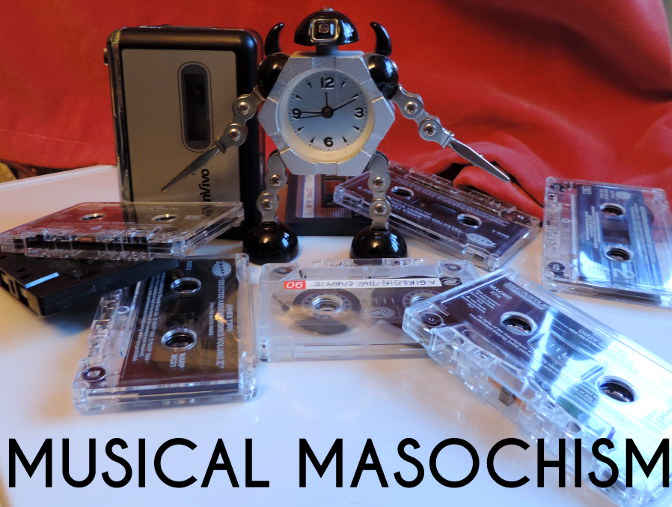

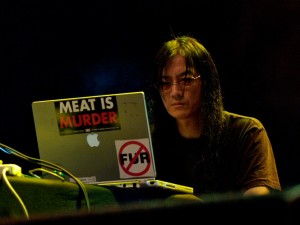
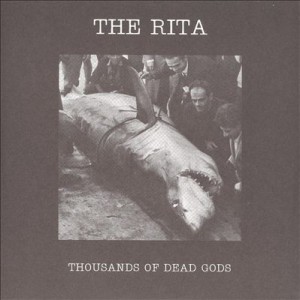 Thousands of Dead Gods (2006) by The Rita many times without ever getting used to it. This makes the noise endlessly surprising, alienating or boring, depending on one’s mood. The sense of noise as abstract is reinforced by its context-lessness; typically the artwork for a Merzbow album is as enigmatic and unrevealing as the album within, and occasionally every bit as flatly un-evocative (not a criticism!) as the Merzbow sound itself. Cultural identifiers in pure noise are also minimalist in the extreme; the race, nationality or gender of noise artists tends to be known only insofar as the artist wishes it to be so.
Thousands of Dead Gods (2006) by The Rita many times without ever getting used to it. This makes the noise endlessly surprising, alienating or boring, depending on one’s mood. The sense of noise as abstract is reinforced by its context-lessness; typically the artwork for a Merzbow album is as enigmatic and unrevealing as the album within, and occasionally every bit as flatly un-evocative (not a criticism!) as the Merzbow sound itself. Cultural identifiers in pure noise are also minimalist in the extreme; the race, nationality or gender of noise artists tends to be known only insofar as the artist wishes it to be so.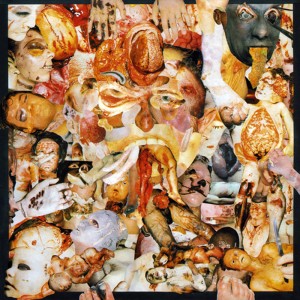 Back in the 80s, this kind of music had an outsider/snob appeal even within the metal genre. 80s metal (on the whole) strove for clarity and precision; Carcass (emerging from an anarcho-crust/punk background) pushed the boundaries of musical extremity and taste (using the notorious collages of medical photos for their artwork, rather than relatively cuddly horror mascots like Iron Maiden’s Eddie) beyond what the standard fan of Iron Maiden, W.A.S.P., Metallica or even Slayer might find acceptable. To say that death metal is relatively lighthearted is slightly misleading – Carcass’ early music was informed by a radical vegetarian disgust with all things meat-based in quite a serious way – but as a subgenre of a popular youth-focussed music it lacks the gravitas of the kind of music which made the late 70s a darker place to have ears.
Back in the 80s, this kind of music had an outsider/snob appeal even within the metal genre. 80s metal (on the whole) strove for clarity and precision; Carcass (emerging from an anarcho-crust/punk background) pushed the boundaries of musical extremity and taste (using the notorious collages of medical photos for their artwork, rather than relatively cuddly horror mascots like Iron Maiden’s Eddie) beyond what the standard fan of Iron Maiden, W.A.S.P., Metallica or even Slayer might find acceptable. To say that death metal is relatively lighthearted is slightly misleading – Carcass’ early music was informed by a radical vegetarian disgust with all things meat-based in quite a serious way – but as a subgenre of a popular youth-focussed music it lacks the gravitas of the kind of music which made the late 70s a darker place to have ears. every bit as evocative of the 1970s as glam or disco, but the way it embodies its era, its brutalist architecture and grey/brown/beige ambience, combats any possible sense of nostalgia. Although it’s easy to say why it’s interesting, liking Throbbing Gristle (as many have done and continue to do) is much harder to explain. The appeal of TG; in effect the appeal of being made to feel uneasy or disgusted, is an odd way to be entertained. On the surface you could say the same about the horror genre in cinema and literature, but Throbbing Gristle’s effect is utterly different from straightforward horror-as-entertainment, feeling (to me anyway) more analogous to the JG Ballard of The Atrocity Exhibition or Crash than to Stephen King, perhaps because like Ballard, TG’s work had more to do with documenting than it did with entertaining. Although there was undoubtedly an element of confrontation in TGs music (especially in a live setting), as with pure noise, confrontation
every bit as evocative of the 1970s as glam or disco, but the way it embodies its era, its brutalist architecture and grey/brown/beige ambience, combats any possible sense of nostalgia. Although it’s easy to say why it’s interesting, liking Throbbing Gristle (as many have done and continue to do) is much harder to explain. The appeal of TG; in effect the appeal of being made to feel uneasy or disgusted, is an odd way to be entertained. On the surface you could say the same about the horror genre in cinema and literature, but Throbbing Gristle’s effect is utterly different from straightforward horror-as-entertainment, feeling (to me anyway) more analogous to the JG Ballard of The Atrocity Exhibition or Crash than to Stephen King, perhaps because like Ballard, TG’s work had more to do with documenting than it did with entertaining. Although there was undoubtedly an element of confrontation in TGs music (especially in a live setting), as with pure noise, confrontation 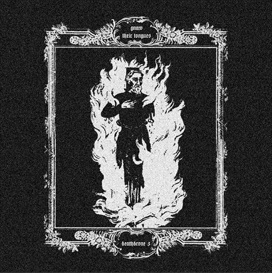 isn’t the focal point that it becomes in the power electronics of groups like Whitehouse and Sutcliffe Jügend who (to some extent) followed on from the early British industrial scene. There is also a more straightforwardly ‘horror noise’ sub-subgenre including bands like Abruptum and the aforementioned Gnaw Their Tongues, whose aim seems to be to engender (with, it must be said, varying degrees of success) extreme anxiety in the listener; significantly different from the almost abstract quality of pure (if harsh) noise artists like Merzbow, easier to understand, but also easier to dismiss as sensationalism.
isn’t the focal point that it becomes in the power electronics of groups like Whitehouse and Sutcliffe Jügend who (to some extent) followed on from the early British industrial scene. There is also a more straightforwardly ‘horror noise’ sub-subgenre including bands like Abruptum and the aforementioned Gnaw Their Tongues, whose aim seems to be to engender (with, it must be said, varying degrees of success) extreme anxiety in the listener; significantly different from the almost abstract quality of pure (if harsh) noise artists like Merzbow, easier to understand, but also easier to dismiss as sensationalism.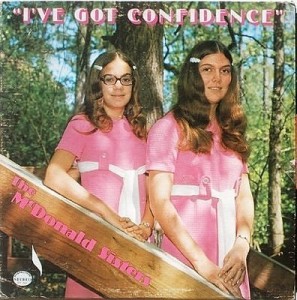 Across all of the arts there are ‘so bad it’s good’ works that appeal on the ironic level of kitsch. These are completely subjective and therefore a bit of a minefield; at what point does listening to something that you personally think is so awful that it’s funny become just listening to it; and is there any difference anyway? Did my teenage self and friends have a different experience listening to an old Shakin’ Stevens tape ‘for a laugh’ than “Shaky”’s actual fans did or do? Well, yes, presumably; they probably don’t laugh as much. Still; it’s all ‘listening with pleasure’ and not only is it subjective, but it’s all about timing. The awfulness of music is as much about the zeitgeist as the popularity of music is; hard to imagine now, but there was a time in the late 80s when listening to Abba (or The Carpenters for that matter) could be enjoyed as revelling in tacky 70s awfulness; but since the early 90s they have been revered by the once-embarrassed media as a great band after all.
Across all of the arts there are ‘so bad it’s good’ works that appeal on the ironic level of kitsch. These are completely subjective and therefore a bit of a minefield; at what point does listening to something that you personally think is so awful that it’s funny become just listening to it; and is there any difference anyway? Did my teenage self and friends have a different experience listening to an old Shakin’ Stevens tape ‘for a laugh’ than “Shaky”’s actual fans did or do? Well, yes, presumably; they probably don’t laugh as much. Still; it’s all ‘listening with pleasure’ and not only is it subjective, but it’s all about timing. The awfulness of music is as much about the zeitgeist as the popularity of music is; hard to imagine now, but there was a time in the late 80s when listening to Abba (or The Carpenters for that matter) could be enjoyed as revelling in tacky 70s awfulness; but since the early 90s they have been revered by the once-embarrassed media as a great band after all. This category takes it for granted that unhappiness is a form of unpleasantness that is most often avoided; which may not be strictly true – or obviously isn’t, given the endless popularity of tragedies, murder mysteries etc. Still, it’s a basic human truth (I hope) that most people would rather be happy than sad. Most of the time that is; historically, music was most often written for occasions; sad music was required for a funeral, just as weddings demanded happy music. Tudor and baroque music often had mythological, narrative or literary inspiration which dictated the mood of the works. For a court composer to make a cheerful-sounding funeral dirge or a comic opera from a tragic mythological story would be perverse at best and bad workmanship at worst.
This category takes it for granted that unhappiness is a form of unpleasantness that is most often avoided; which may not be strictly true – or obviously isn’t, given the endless popularity of tragedies, murder mysteries etc. Still, it’s a basic human truth (I hope) that most people would rather be happy than sad. Most of the time that is; historically, music was most often written for occasions; sad music was required for a funeral, just as weddings demanded happy music. Tudor and baroque music often had mythological, narrative or literary inspiration which dictated the mood of the works. For a court composer to make a cheerful-sounding funeral dirge or a comic opera from a tragic mythological story would be perverse at best and bad workmanship at worst.